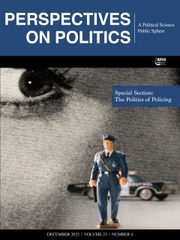Matthew Lassiter’s review of The Long War on Drugs is the kind of generous review that makes one proud to have written one’s own book, even while Lassiter gently and correctly pointed out the places the book could have been better. He was right, each time.
What I’d like to focus on in my response is not so much what Lassiter said about my book, but what our books together say about the state of “drugs history.” The history of drugs, particularly illicit drugs, and particularly in the United States, is often seen as titillating. Tell someone at a dinner party that you are working on a history of opium regulation in colonial Southeast Asia, a pedestrian topic if ever there was one, and people will usually giggle and start to ask probing, even personal questions about illicit drugs. I often caution young scholars that drugs history topics are best for second books, not first. Some institutions seem wary of the intellectual, political or actual company a drugs historian might keep.
A decade or more ago, one might have been able to make the case that drugs history, especially that about the war on drugs in the United States, was driven in large measure by a desire to criticize U.S. drugs policy—and was therefore susceptible to being both overly politicized and incendiary. But the new “drugs history,” as one can see in, for example, The Oxford Handbook of Global Drug History edited by Paul Gootenberg, explores a longer trajectory of the use, trade, and meaning of mind-altering drugs, demonstrating a deep connection between these substances and the development of both economies and state power.
Although Lassiter and I use different scales (his local and state, mine international and comparative), we both build on the “new drugs history” to craft insights into not only drugs history but also a broader history of the United States. Lassiter explores the ways that race, class, and geography played out in local politics in the United States to create a national politics mired in segregation, where drug policies were both a driver and a victim of these politics. My work shows how the decision by early twentieth-century U.S. policymakers, taken first for a U.S. colony and then for the metropole, to define drugs as an external threat allowed them to expand state power in ways that reverberate to the present. He writes about local politics, whereas I write about international politics, both of us on the topic of drugs, and both in the end providing insight into the exercise of power in the nation more broadly.
Our books are another sign, one among many, that drug history has matured as a subfield. Drugs touch all aspects of human life: pleasure, greed, profit, power, beauty, health, and competition. We are deeply concerned with the political, taking it as an obligation to explore the myriad and problematic ways drug politics have been intertwined with other forms of politics that cause division and harm.

